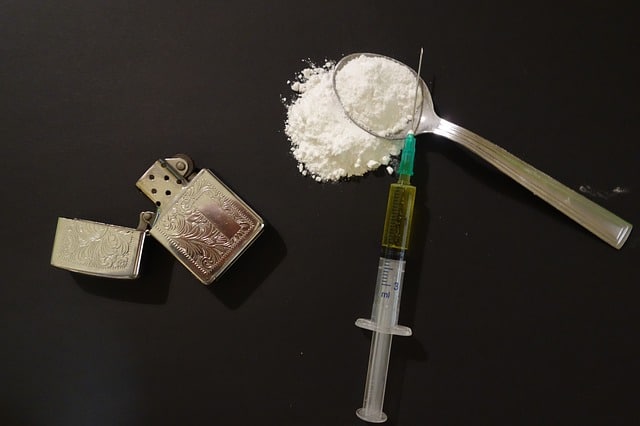We have already covered how effective Eye Movement Desensitization and Reprocessing or EMDR can be in treating anxiety and phobias, but can EMDR be used to treat addiction as well?
EMDR has been shown to be very effective in treating addiction, since it so often stems from underlying trauma. By resolving the trauma, EMDR can also resolve any addictions which stem from it, eliminating any need for the acting out and self soothing that so often characterize addiction.
In this sense, EDMR therapy differs from other approaches in that it tackles addiction at the root rather than focusing on controlling the addictive behavior directly. By connecting the addictive behavior patterns up to unresolved emotional dynamics going on inside the person, the addictive cycle is broken and there is no longer any need to act out the addiction.
There is no need to self medicate with the addiction because there is nothing that needs soothing and medicating anymore if any trauma still sitting inside the person is processed to resolution using the EMDR therapy. Let’s look in more detail at the nature of addiction and how EMDR can help.
Contents
Overview of Addiction
Addiction is a very widespread phenomenon in modern western society and can take a number of different forms – substance addictions and behavioral or process addictions being the main two categories. Alcohol and drug addictions are common types of substance addiction, with sex and gambling addiction two common forms of behavioral or process addiction.
It can be a debilitating condition in that the person may find themselves unable to stop the addictive behavior even if they want to. They feel a sense of powerlessness over their condition and unable to control the urges and cravings that come over them. They feel their behavior is driven by factors they are not aware of and in many cases they are right in one sense.
The reality is that addiction so often it arises as a way of soothing some uncomfortable feelings going on inside the person, or else managing a more ubiquitous background level of stress going on in their lives.
The addictive behavior then becomes a way of managing and keeping a lid on these uncomfortable inner states, with the unfortunate consequence that over time, continually acting out the addiction changes the circuitry of the brain, meaning the person cannot stop even if they want to.
The structure of the brain has now been altered. Repetition of addictive behavior patterns over time carves new pathways put in the brain, and the person can become dependent on the addiction just to feel normal. Similarly, unpleasant feelings can arise when the person tries to stop, since brain chemistry has been altered by the addiction. The addict experiences withdrawal symptoms.
There are many different approaches to treating addiction once it has progressed to the point where the person feels they have lost contol over it. Let’s look at how the EMDR process can work to resolve the underlying emotional states which so often drive the addiction.
The EMDR Process in Brief
EMDR therapy takes a very different form to other types of therapy, which often involve a lot of talking. In EMDR there is a little bit of talking but the main part of the process involves accessing and processing traumatic memories using a very specific and well developed method.
We will briefly summarize here how the EMDR process works. See our full article on the topic for a very detailed run down. We just cover an overview of each of the 8 general steps here:
- Client History – Identify target memories.
- Preparation – Prepare the client appropriately for the therapy.
- Assessment – Fully assess and evaluate target memories, feelings, beliefs etc.
- Desensitization – Use eye movements or other forms of bilateral simulation to process memories.
- Installation – Install positive beliefs about self to replace negative beliefs and affects associated with memories.
- Body Scan – Eliminate any remaining physiological symptoms with further bilateral stimulation.
- Closure – Return client to safe calm equilibrium as session ends.
- Re-evaluation – Check that all aspects of memory have been fully processed.
The idea here is that the EMDR therapist is helping the client access and process unpleasant memories from their past which have remained stuck inside them. By processing the memories to resolution using the bilateral stimulation method of hand movements, the emotional sting is taken out of them and they no longer bother the person in the same way they used to. They are just another memory.
This is only a very general outline and each EMDR therapist may tailor the treatment to suit each individual person depending on the circumstances. The process may also be slightly modified when treating addiction as opposed to other disorders, with an emphasis on precisely pinning down certain emotions which lead to addictive behavior and breaking this connection.
Why is EMDR so Effective For Addiction?
The excellent video above from Dr Andrew Leeds covers the issue of why EMDR is so effective for treating addiction very well. The basic reason is the same reason as to why it treats other conditions like anxiety and phobias so well – it resolves the underlying dynamics of trauma which often drive these conditions rather than focusing solely on the condition itself.
It is now well understood that in so many cases, trauma and addiction go hand in hand. The addiction is way of soothing unpleasant feelings which come up inside the person as a result of some trauma experienced in life.
This can be anything from more obvious “Big T” traumas, like war and combat experiences, severe accidents or violent assaults or other distressing or near death experiences, down to an accumulation of “Small T” traumas or unpleasant life events which can leave a person with similar PTSD style symptoms. The addiction acts as a way of soothing or numbing these unpleasant feelings.
When applied to addiction, the EMDR process allows the therapist and client to connect any underlying emotional states to addictive behavior – eg. when I feel X I do Y – and access and process these underlying emotional states using the bilateral stimulation EMDR method. The connection between the emotional state and the addictive behavior is then broken. There is no longer any need to act out
Supporting Studies
Lest we be accused of making these assertions without providing supporting evidence, below are some links to some rigorous academic studies supporting the effectiveness of EMDR in helping to treat some different forms of addiction. This is just a selection; there are now many more supporting studies you can find by searching online.
- Study into the positive impact of EMDR treatment on cravings in alcohol addiction.
- 2008 paper on the effectiveness of EMDR in treating trauma and addiction.
- 2009 paper on the effectivness of EMDR in treating addiction and reducing relapse rates.
- 2007 paper on the use of EMDR to treat sexual addiction and underlying shame and trauma.
- See also this webinar by EMDR founder Francine Shapiro on some of the studies on the effectiveness of EMDR for addiction and other conditions.
Contrast With Other Approaches
So many other approaches attempt to tackle the addictive behavior on it’s own terms, emphasizing cutting off supply of the addictive substance or behavior, detoxing and so on. The goal is to create a life where the addiction cannot be acted out so easily, removing triggers and developing support systems, which are all very useful and valid steps.
However, the EMDR approach is again a more fundamental and core treatment, in that it seeks to resolve the underlying psychological dynamics which so often drive addiction when it is delved into further.
It is rarely the case that addiction is operating on it’s own in an isolated bubble in the person. It doesn’t just “happen”. There are almost always emotional dynamics underpinning it. Once these are resolved, the addictive behaviors often fall away all on their own, since there is nothing driving them anymore.
This same pattern can be found in the way EMDR treats anxiety and phobia disorders, and is a big reason why it is such an effective treatment. It is resolving the trauma and emotional states which are so often at the core of these conditions, rather than fixating on the condition itself.
Precautionary Measures
There are however often some precautions which need to be taken before putting a recovering addict through EMDR treatment. Dr Andrew Leeds covers some of these in the video above. The addiction needs to ideally be sufficiently stabilized and under control before EMDR therapy is attempted.
The main reason for this is that EMDR therapy by it’s very nature does involve delving back into some of the most unpleasant and traumatic experiences a person has experienced in their lives and can therefore be (temporarily) uncomfortable whilst the processing is going on, although ultimately beneficial in the long run.
However if a large part of the motivation for the addictive behavior is to soothe uncomfortable feelings going on inside the person, then re-accessing traumatic memories when the addiction is not sufficiently stabilized can lead to a person going straight back into their addiction as a way of soothing the uncomfortable feelings that come up.
In this sense, conducting EMDR therapy too soon in more severe cases of addiction can be counterproductive and send the patient back into their addiction. Therefore it is important to make sure the addiction is sufficiently under control, with cravings and acting out reduced. The person also needs to feel sufficiently strong to start confronting traumatic memories before commencing treatment.
That said, it is also important not to wait unnecessarily long before starting EMDR. The old way of thinking in addiction recovery circles was to assume that a person had to be “sober” and “clean” from their addiction for a long time before even thinking about confronting deeper issues of trauma.
This has now been shown to be not true, in the sense that waiting longer before resolving underlying emotional dynamics can actually make it more likely an addict will fall back into relapse. EMDR experts now consider it much more effective to stabilize an addiction to a reasonable level and get on with resolving any underlying trauma which drives the addiction as soon as is practical and reasonable in each case.
So it is about finding a balance between making sure the person is strong enough and feels enough in control of their addiction to start treatment, but also commencing with the EMDR as soon as is reasonably possible so that the person can enjoy the often rapid and drastic improvements in quality of life it can promote when done properly.
It is also important to realize that there may be factors other than past trauma which contribute towards the addictive behavior patterns a person has got caught up in. For example, there may be excessive levels of underlying stress in the person’s current life, along with unresolved past trauma, which also contribute towards this need to medicate and self soothe with addictive behaviors.
In these cases it is also important to find methods to reduce and manage these stress levels, which can also drive an addict’s compulsion to act out. Lifestyle adjustments and the use of mindfulness meditation can be important steps here in order to better manage stress and eliminate all factors in a person’s life which have contributed to their need to self medicate with addictions.
So whilst EMDR should not be treated as a panacea cure for addiction, it is still often a crucial component in treatment since it can resolve the underlying trauma which is so often an important factor, although not always the only contributing factor, in how addictions form.






